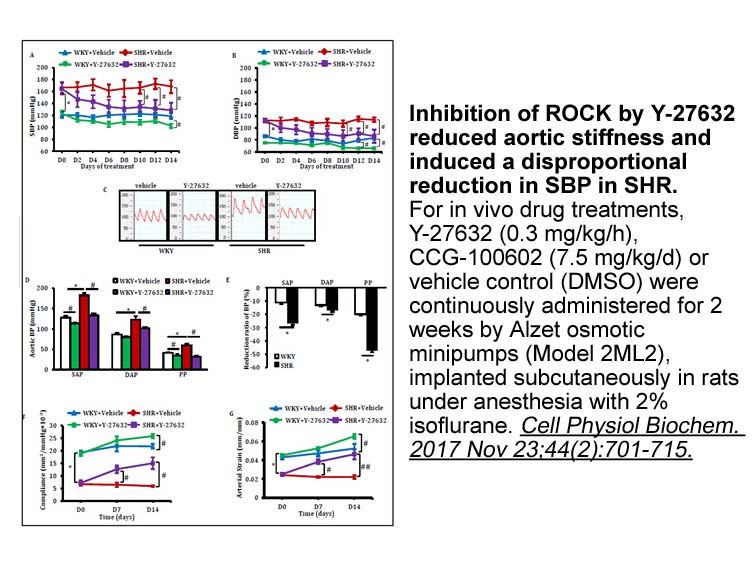Archives
MAP K was originally identified as a member of the
MAP3K6 was originally identified as a member of the serine/threonine protein kinase family owing to its interaction with MAP3K5/ASK1 and a protein kinase that also activates the transcription factor c-Jun and p38 kinase (Wang et al., 1998), which is specifically expressed in tissues that are directly exposed to the external environment of the body, such as the skin, lungs, and gastrointestinal tract (Iriyama et al., 2009, Takeda et al., 2007). MAP3K6, known as apoptosis signal-regulating kinase 2 (ASK2), is a member of the MAPK signaling cascade (Kyriakis and Avruch, 2012) and a kinase involved in MAPK activation (Hemesath et al., 1998). Taken together, we put forward to a hypothesis that CDK5 might play roles in melanogenesis through MAPK signaling pathway. Here, we evaluated the effect of CDK5 on regulation of the MAPK pathway in the skin of CDK5-knockdown mice to further supply the underlying mechanism of the functional role of CDK5 in melanogenesis.
al., 1998). Taken together, we put forward to a hypothesis that CDK5 might play roles in melanogenesis through MAPK signaling pathway. Here, we evaluated the effect of CDK5 on regulation of the MAPK pathway in the skin of CDK5-knockdown mice to further supply the underlying mechanism of the functional role of CDK5 in melanogenesis.
Material and methods
Results
Discussion
Monomeric CDK5 shows no enzymatic activity and requires the association with a regulatory partner for activation (Dhavan and Tsai, 2001). Here, we found that CDK7 might be one of the partners required for activation of CDK5 in the skin tissue, based on the results of co-immunoprecipitation analysis. Similar to activator binding (i.e., p35 or p25), the phosphorylation of CDK5 plays a critical role in its activation (Dhavan and Tsai, 2001). In particular, the phosphorylation of CDK5 at residue Tyr15 by c-Abelson has a stimulatory effect to increase CDK5 kinase activity (Dhavan and Tsai, 2001). By contrast, the activity of CDKs can be inhibited by phosphorylation of the Thr14 and Tyr15 residues (Mueller et al., 1995). In the present study, we found that the phosphorylation of CDK5 (Tyr15) was decreased and total CDK5 protein was not changed obviously in the skin of CDK5-knockdown mice, suggesting that the CDK5 expression level may be a direct or indirect stimulator for its own activity. There has been a report that peripheral inflammatory stimulation results in increased CDK5 phosphorylation via ERK activity (Zhang et al., 2014). ERK, one of the members of the MAPK family of proteins, plays critical roles in melanogenesis (Kim et al., 2013). Clear cross-talk between the p38 MAPK and MEK/ERK pathways has been detected in melanoma Fostriecin sodium salt sale (Smalley and Eisen, 2000, Smalley, 2003). And the melanin production and tyrosinase activity are significantly recovered by the specific MEK1 inhibitor (Jang et al., 2011). Here, MAK3K6, p-ERK and p-MEK1 expression was down-regulated in the CDK5 knockdown mice skin, which supplied the evidence that CDK5 mediated the cross-talk between MAPK and MEK/ERK.
MAP3K6 was identified as a target of miR-143, using stable isotope labeling with amino acids in a cell culture-based proteomics approach (Yang et al., 2010). Functional, mature miRNAs arise through several post-transcriptional processing steps, including cleavage by Drosha/DGCR8 to pre-miRNA, export, and digestion by the RNase III endonuclease Dicer, which also mediates loading onto RISC complexes (Zeng and Cullen, 2006, Kim et al., 2009). Dicer cleavage activity and mature miRNA expression in mammals are restricted to certain tissues and cell types, suggesting tissue-specific regulation of its activity (Obernosterer et al., 2006, Levy et al., 2010) studied the physiological significance of Dicer in human melanocytes in vivo, and found that transcriptional upregulation of Dicer occurs during melanocyte differentiation due to direct targeting by MITF. Moreover, the down-regulation of Drosha and Dicer was shown to only affect the expression of a subset of miRNAs (Kuehbacher et al., 2007, Cummins et al., 2006) also reported that the expression of only a subset of miRNAs was reduced after Dicer down-regulation. In addition, when Dicer was knocked down with small-interfering RNA in a hypoxic condition, the level of pre-miR-143 increased (Yao et al., 2014). The mitogen and stress-induced phosphorylation of CREB at Ser133 has been linked to the transcription of several immediate early genes, including c-Fos, JunB, and Egr1. As Dicer, a key component of the miRNA processing machinery, is a target of the melanocyte-specific master regulator MITF, this suggests that miRNAs are important components of cell type-specific transcriptional programs. In turn, MITF is itself a target of individual miRNAs (miR-137, miR-125b, miR-25, and possibly miR-340), establishing negative feedback mechanisms that control MITF expression in differentiated cells (Botchkareva, 2012). In the present study, MITF and Dicer were both downregulated in the CDK5-knockdown mice, suggesting that CDK5 regulates miRNAs such as miR-143 via interactions with p-ERK, MITF, and Dicer and then causes the decreased eumelanins production and increased pheomelanins production. During the melanogenesis in human and alpaca, eumelanin is the main component and pheomelanin is not directly related to the colors (Cecchi et al., 2007, Fan et al., 2010). However, the decreased pheomelanin production in CDK5 knockdown mice hair might be due to the red to yellow phenotype of pheomelanin.